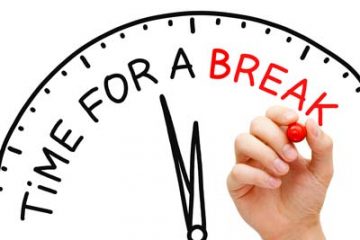Workstation assessments: taking breaks at work
 At your desk all day? Break it up
At your desk all day? Break it up
We know that sitting is a known risk factor for ill health, and that the strategies employed to avoid prolonged sitting should be multifactorial. These should include physical, organisational, psychosocial and individual factors.
The average officer worker is likely to spend 65,000 hours in a task chair, from leaving full-time education until they retire. In the face of this statistic, one seemingly easy healthier working practice is to take regular breaks away from the desk. Frequent micro-breaks or postural adjustments may help to avoid the risks associated with sitting.
Health risks and costs to employers
The Chartered Society of Physiotherapy (CSP) states that people in the UK regularly work all day without taking a break, and are putting their health at risk.

Physiotherapists are concerned that poor work habits, such as not taking breaks at work, working in the same position for extended periods, going to work when ill or stressed, and not taking enough exercise, pose serious health risks. And for employers, the effect of this could be to cause potentially significant costs.
What can we do to encourage people into taking breaks at work, or changing activities?

They do not specify frequency or duration as this will depend upon the nature of the job, but do say that the timing of breaks is more important than the length, and that shorter more frequent breaks are preferable. Also, that users should have discretion to take breaks as needed, so that they can control the pace of work. They encourage breaks away from the desk and working environment.
Workplace design, equipment provision and management practices that enable staff to work in a variety of settings may encourage more activity and less sedentary positioning.
It only takes a minute

- Lift your shoulders towards your ears then roll them forwards, down and backwards. Then reverse the movement to roll shoulders backwards, up and forwards.
- Place your palms together in front of the chest with elbows held away from your body and push both hands together powerfully until you feel the arm muscles contract. Hold the prayer hands pushed together for 20 seconds. Release and repeat.
- Take a deep breath and tighten the abdominal muscles, bringing them in towards the spine as you exhale. Stay squeezed for 5-10 seconds and release. Repeat
- Squeeze your buttocks together, hold for 5-10 seconds, and release. Repeat
- Tap your toes on the floor under your desk. Or use your foot rest to tap your feet on and off, alternating feet, in soccer-drill fashion. Progress so that you lift your knees at the same time.
How organisations can encourage activity

Here’s a short ideas list to help kick start the planning process for your organisation:
- Encourage standing meetings through the provision of high meeting tables, or encourage walking and talking.
- Provide standing or treadmill desks.
- Encourage employees to use the stairs rather than taking the lift. Discourage the use of lifts other than by employees with access issues.
- Discourage employees from eating lunch at their desks.
- Position printers, coffee facilities and other frequently used equipment where they have to be walked to.

Contact our ergonomics consultants for expert advice on taking breaks and employee wellbeing
 At your desk all day? Break it up
At your desk all day? Break it up